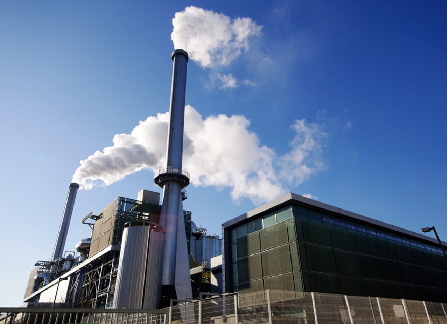Radiological Impact On Man and the Environment From the Oil and Gas Industry
December 21, 2006The Truth from Above
January 17, 2007Oil and Gas Accountability Project
January, 2007
In August, 2005, Wilma Subra and the Oil and Gas Accountability Project spent five days in Monroe, Conecuh and Escambia counties in Alabama. The purpose of the visit was to measure concentrations of hydrogen sulfide (H2S) and volatile organic compounds (VOCs) in the vicinity of known sources of air emissions, and to measure ambient concentrations of H2S and VOCs in residential neighborhoods. The goal of the project was not to identify facilities that have been breaking air quality laws, but rather, to determine if there is a potential air pollution problem that needs to be investigated and addressed in order to protect the health of the citizens in these Alabama counties.
Hydrogen sulfide may be released during the extraction, production and refinement oil and natural gas. Other industrial sources of H2S include pulp and paper manufacturing, sewage treatment plants, manure-handling operations, leather tanneries, rayon production, and coke oven plants.
State agencies from across the United States have received H2S-related complaints from citizens. Based on these complaints, agencies in Arkansas, Louisiana, New Mexico, and North Dakota have performed monitoring around oil and gas facilities. Concentrations have varied from location to location, with average concentrations at all sites in the low parts per billion level, and maximum H2 S concentrations ranging from 35 ppb to 15,000 ppb (i.e., 15 parts per million).
Research suggests that long-term exposure to H2S at concentrations above 7 ppb may affect the ear, nose and throat, and damage the central nervous and respiratory systems, and that some health effects may be permanent. High concentrations (above 1,000 ppm) may cause immediate collapse and death.
Oil and natural gas contain varying amounts and species of volatile organic compounds, and consequently, during the extraction, processing and distribution of oil and gas, a variety of VOCs may be released (e.g., via leaky equipment and tank hatches, or through intentional venting and flaring of natural gas).
A recent study conducted in Colorado demonstrates that volatile organic compounds associated with oil and natural gas production have the potential to be released at concentrations that are harmful to human health. Maximum concentrations of 56 parts per billion were measured close to oil and gas facilities in Garfield County, Colorado; this is close to three times what the California Environmental Protection Agency has set as the concentration at which no adverse health effects are likely to occur. Several VOCs are linked to health problems in humans. Harmful VOCs include 1-3 butadiene, benzene, ethylbenzene, toluene and xylenes, all of which have been associated with oil and gas production.
In our study, hydrogen sulfide levels sampled in residential areas were measured at concentrations in the 100s and 1,000s of parts per billion. This is significantly elevated compared to normal urban background levels, which are typically less than 1 ppb, but comparable to other oil and gas regions in the U.S., where levels of H2S have been measured in the 100-15,000 ppb range in the vicinity of wells and facilities.
Total VOC levels were frequently measured in the parts per million range. Since our study did not include the identification of specific VOCs in air, it is strongly recommended that attempts be made by government agencies to identify and monitor the concentrations of VOCs in the air in Monroe, Escambia and Conecuh counties. Not only may individual VOCs, such as benzene, be contributing to health problems in the area, the VOCs may also be contributing to the formation of ground-level ozone, which is also a health hazard.
Based on the findings for both H2S and VOCs, it is recommended that monitoring occur both in residential and oil and gas production areas. This will help to hone-in on operations that may be emitting large volumes of H2S and VOCs, and evaluate whether the concentrations in residential neighborhoods are posing a threat to human health and the environment.



